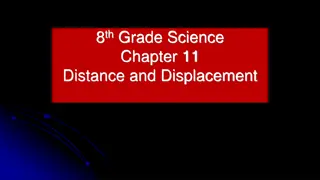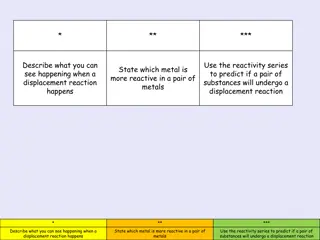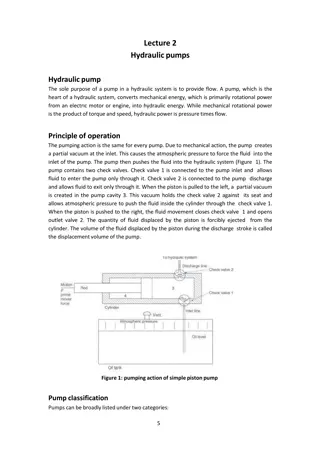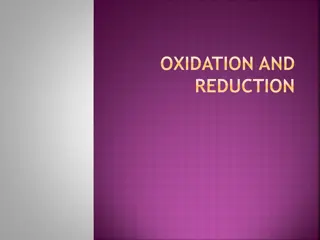Understanding Single Displacement Reactions in Chemistry
Learn about single displacement reactions in chemistry where one element displaces another in a compound. Explore the general equation, reactivity differences, activity series, and predictions for various scenarios, including halogens and metals. Discover how to identify likely elements to swap and predict reactions with balanced equations. Enhance your knowledge of chemical reactions with practical examples and explanations.
Download Presentation

Please find below an Image/Link to download the presentation.
The content on the website is provided AS IS for your information and personal use only. It may not be sold, licensed, or shared on other websites without obtaining consent from the author. Download presentation by click this link. If you encounter any issues during the download, it is possible that the publisher has removed the file from their server.
E N D
Presentation Transcript
Identify and predict single displacement reactions.
In a single-displacement reaction, one element displaces another in a compound. Single displacement reactions follow this general equation: A + BC AC + B
In single-displacement reactions, one metal can replace hydrogen or another metal.
A metal will not always replace a metal in a compound dissolved in water because of differing reactivities. An activity series can be used to predict if reactions will occur.
Halogens frequently replace other halogens in replacement reactions.
Halogens also have different reactivities and do not always replace each other. An activity series can be used to predict if reactions will occur.
Identify which two elements would be likely to swap. Consult the activity series to see which element is more reactive. If the free element is more reactive, it will trade places with the element in the compound. If the free element is less reactive, no reaction will take place.
Predict whether the following single displacement reactions will occur. If a reaction occurs, write a balanced equation for the reaction. K(s) + ZnCl2(aq)
Cl2(g) + HF(aq) Fe(s) + Na3PO4(aq) Al(s) + Pb(NO3)2(aq)























